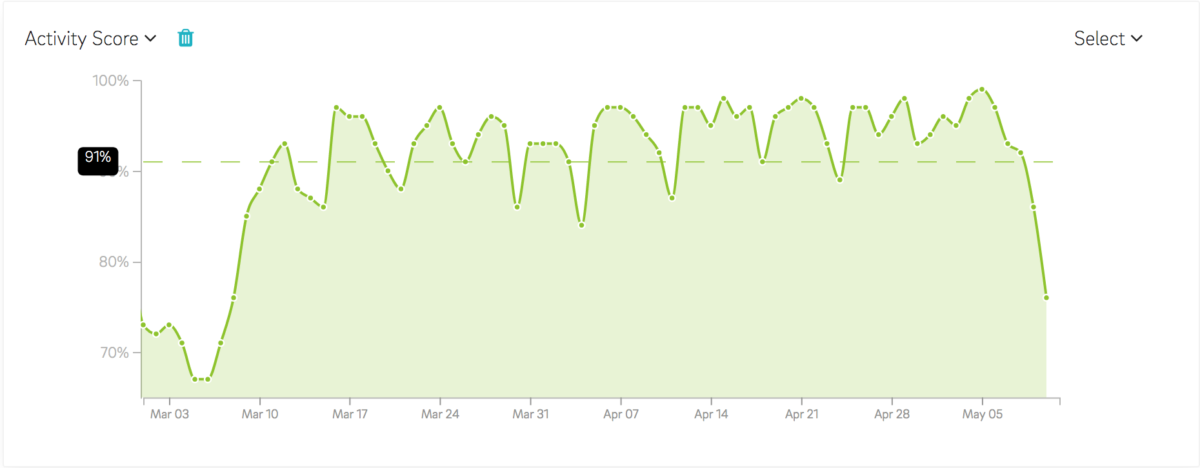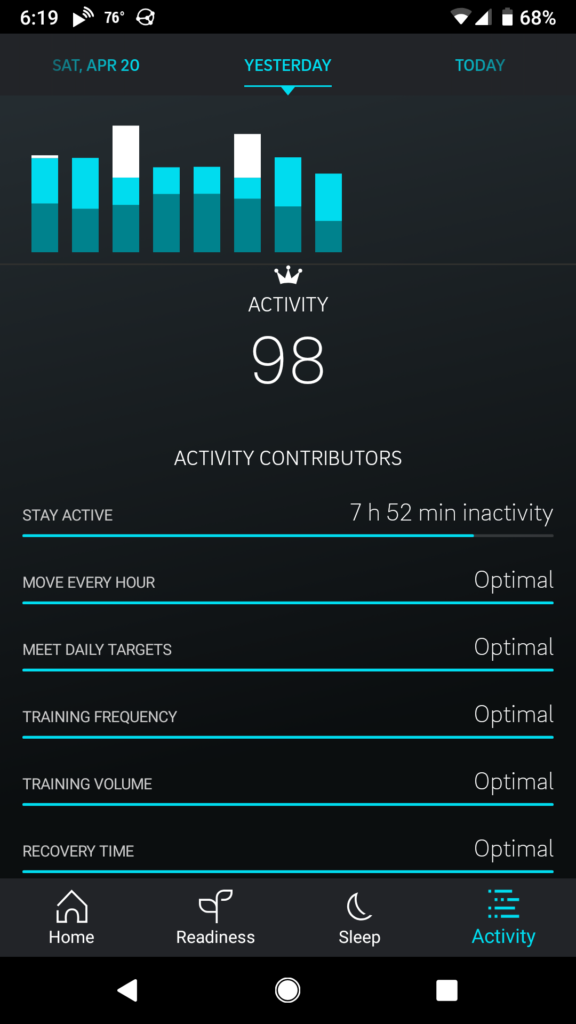First, let me say that maximizing my Oura ring activity score is, in and of itself, of no value whatsoever—except to the extent that it reflects and reinforces my efforts to get an appropriate level of physical activity.
Happily, I find that getting an appropriate amount of activity generally results in a higher score. So it works at that level, with perhaps a few mismatches between what I think is appropriate and what the Oura software thinks is appropriate, the main one being their idea of what counts as a recovery day.
Periodization of training—getting a mix of training days and recovery days—is a great idea. In fact, the lack of periodization is one of the limitations with Google Fit, whose model is to have a daily activity goal which is a little aggressive—a goal that motivates you to to get out and walk just a little more than you otherwise might. The problem is that a goal that’s even a little bit aggressive is going to be excessive for your recovery days, while still being much less than you probably want for your training days.
This is where the Oura ring software is a big step up from Google Fit. It strongly encourages both training days and recovery days. Unfortunately, its idea of a recovery day seems a bit too strict for me:
For Oura, an easy day means keeping the amount of medium intensity level activity below 200 MET minutes (200-300 kcal/day), and high intensity activity below 100 MET minutes (100-150 kcal/day).
In practice this can mean doing lots of low intensity activities, getting healthy amounts of medium intensity activity (30-60 min), but only a small amount of high intensity activity (below 10 min).
Now, that’s all well and good, except that ordinary walking is a medium intensity activity, and (except when the weather is crappy) it’s a very rare day indeed that I don’t end up walking more than an hour—meaning that I basically never get a recovery day in Oura ring terms.
The result is that whenever the weather is nice my activity score starts dropping, because I’m not getting what my ring thinks is appropriate recovery. Then, when there’s a couple of days of crappy weather and I sit around the house all day, my score will climb (as my recovery time value improves). Then, as soon as the weather gets nice again and I can get out and be active, my activity score can shoot up into the high 90s:
However, I can only get five days of such high levels. Since I need to have at least two recovery days per week, a string of more than five nice days means my recovery suffers once again, turning into lower activity scores.
I haven’t fully characterized the behavior so far, but it seems like the software may well be doing just what the quoted text above says: Getting between 30 and 60 minutes of medium activity makes a day a recovery day, with a hard end to any “recovery” at 61 minutes.
If true, that would probably be the place to make a fix. That is, I’m not trying to suggest that I have any data to show that an average person could walk more than 60 minutes and still recover as well, nor do I have any good metric for identifying some subset of people who can walk more and recover well. But I am pretty sure that the 1 h 3 min of medium activity that I got the day before yesterday is not so much more than the 60 I got yesterday that the former should count as a training day rather than a recovery day.




